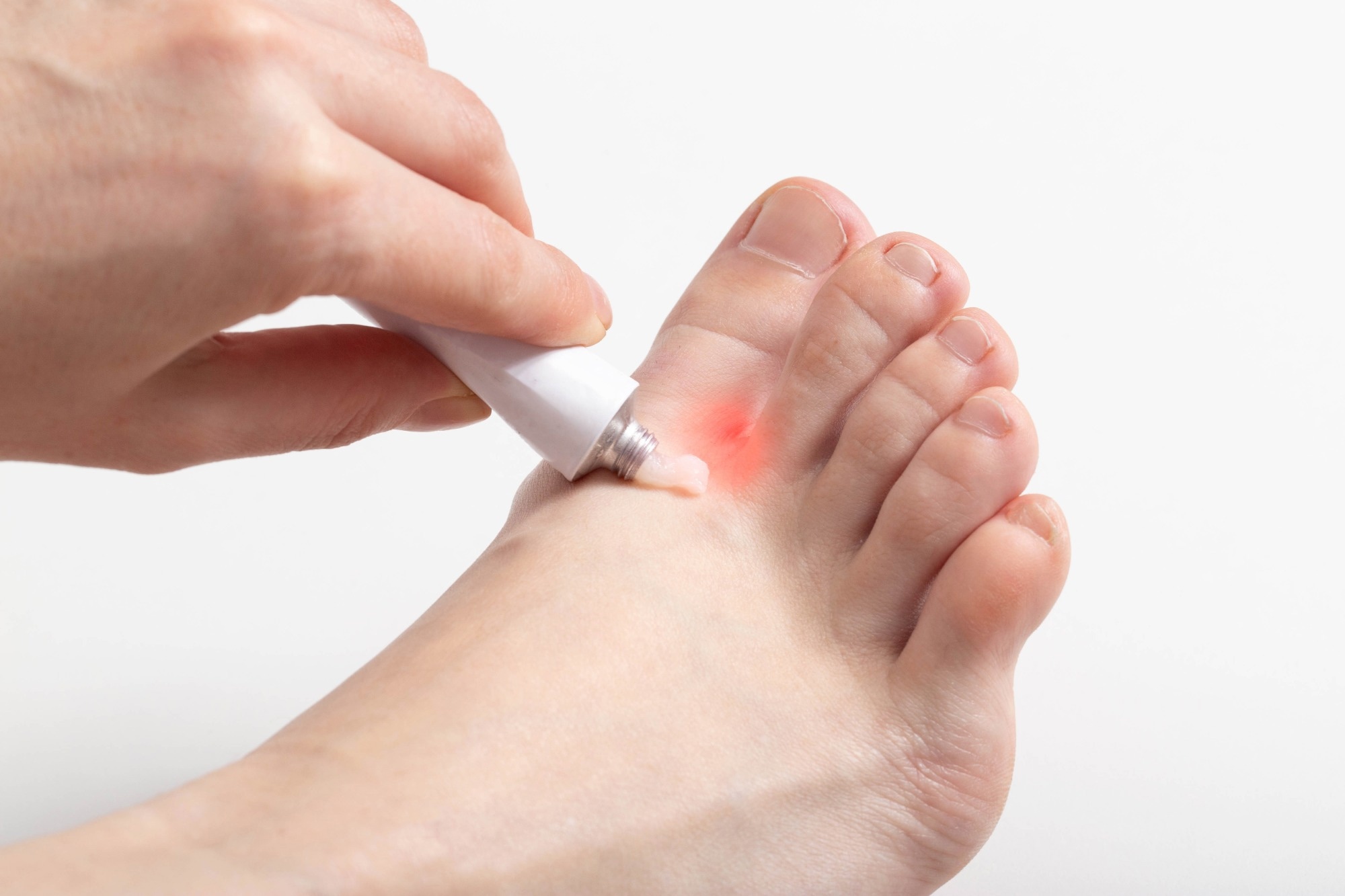The US Centers for Disease Control and Prevention (CDC) has recently assessed prescription volumes, rates, and costs for topical antifungal medications in the context of the recent emergence of severe antimicrobial-resistant superficial fungal infections in the United States.
The study is published in CDC’s Morbidity and Mortality Weekly Report.
 Study: Topical Antifungal Prescribing for Medicare Part D Beneficiaries — United States, 2021. Image Credit: HenadziPechan / Shutterstock
Study: Topical Antifungal Prescribing for Medicare Part D Beneficiaries — United States, 2021. Image Credit: HenadziPechan / Shutterstock
Background
The estimated prevalence of superficial fungal skin infections is more than 20% worldwide. Because of the recent emergence and spread of antimicrobial-resistant fungal skin infections, South Asia has witnessed large outbreaks of extensive, recalcitrant infections that are difficult to treat using topical antifungal medications or first-line therapies. Overuse or misuse of antifungal-corticosteroid combination creams is mainly responsible for the emergence of antimicrobial-resistant fungal infections.
Recent outbreaks of antimicrobial-resistant fungal infections with extensive skin lesions have been detected in at least 11 US states. In the United States, dermatologists rarely perform confirmatory diagnostic tests for fungal skin infections and mostly rely on visual inspection for infection diagnosis. This leads to higher rates of prescriptions for non-recommended topical antifungal medications.
To establish and promote a correct guideline for the proper use of these medications, the CDC has assessed prescribing volumes of topical antifungal medications among Medicare Part D beneficiaries in the United States during 2021.
Study design
The 2021 Medicare Part D prescription drug benefit program includes approximately 48.8 million beneficiaries. The Centers for Medicare & Medicaid Services (CMS) Medicare Part D dataset contains information on the total number of prescriptions and drug costs.
This dataset was used to examine prescription volumes, total costs, and average costs for topical antifungal medications and topical antifungal-corticosteroid combination medications. The study also calculated prescription rates per 1,000 beneficiaries and prescription rates per prescriber.
Important observations
According to the study analysis, a total of 6.5 million topical antifungal prescriptions were written for Medicare Part D beneficiaries during 2021. This corresponded to a total cost of 231 million USD. The overall rate of prescriptions was 134 prescriptions per 1000 beneficiaries. The prescription rate was highest in the Northeast, followed by the South.
The most commonly prescribed medicines were ketoconazole, nystatin, and clotrimazole-betamethasone dipropionate. The average per-prescription cost was highest for efinaconazole, followed by tavaborole and oxiconazole. The lowest average per prescription cost was for nystatin, followed by clotrimazole-betamethasone dipropionate, clotrimazole, and ketoconazole.
Regarding prescribers, topical antifungal medications were prescribed by 12.8% of 1,017,417 unique prescribers. The prescription volume per provider was highest for dermatologists, followed by podiatrists and primary care physicians. Primary care physicians wrote the most prescriptions, followed by nurse practitioners, dermatologists, and podiatrists. The top 10% of prescribers wrote 44.2% of all topical antifungal prescriptions.
Study significance
The study finds that 6.5 million topical antifungal prescriptions were filled for Medicare Part D beneficiaries during 2021, at a total cost of 231 million USD. This corresponds to one prescription for every eight beneficiaries.
Primary care physicians, nurse practitioners, and physician assistants wrote the most prescriptions. This highlights the need for implementing appropriate drug-prescribing guidelines in these groups. Furthermore, dermatologists and podiatrists had higher per-provider prescribing rates than other groups. This indicates that patients with fungal skin infections more frequently visit dermatologists and podiatrists.
The study identifies clotrimazole-betamethasone dipropionate as the most commonly prescribed medication. Overuse or misuse of this antifungal-corticosteroid combination can lead to the emergence of antimicrobial-resistant fungal skin infections. This combination therapy contains a high-potency steroid that can damage the skin and suppress the hypothalamic-pituitary-adrenal axis if used for a prolonged time or over a large body surface area.
Considering the risks associated with clotrimazole-betamethasone dipropionate combination therapy, clinicians should consider prescribing alternative therapies, such as antifungal monotherapy along with a short course of low-potency corticosteroid treatment to control severe symptoms (severe pruritis).
Overall, the study highlights the need to evaluate current practices of antifungal use carefully. Healthcare providers should prescribe topical antifungal medications, especially antifungal-corticosteroid combination, more reasonably for suspected superficial fungal infections. They should consider laboratory testing to confirm a diagnosis. They should also educate the patients about the correct use of topical antifungal medications.